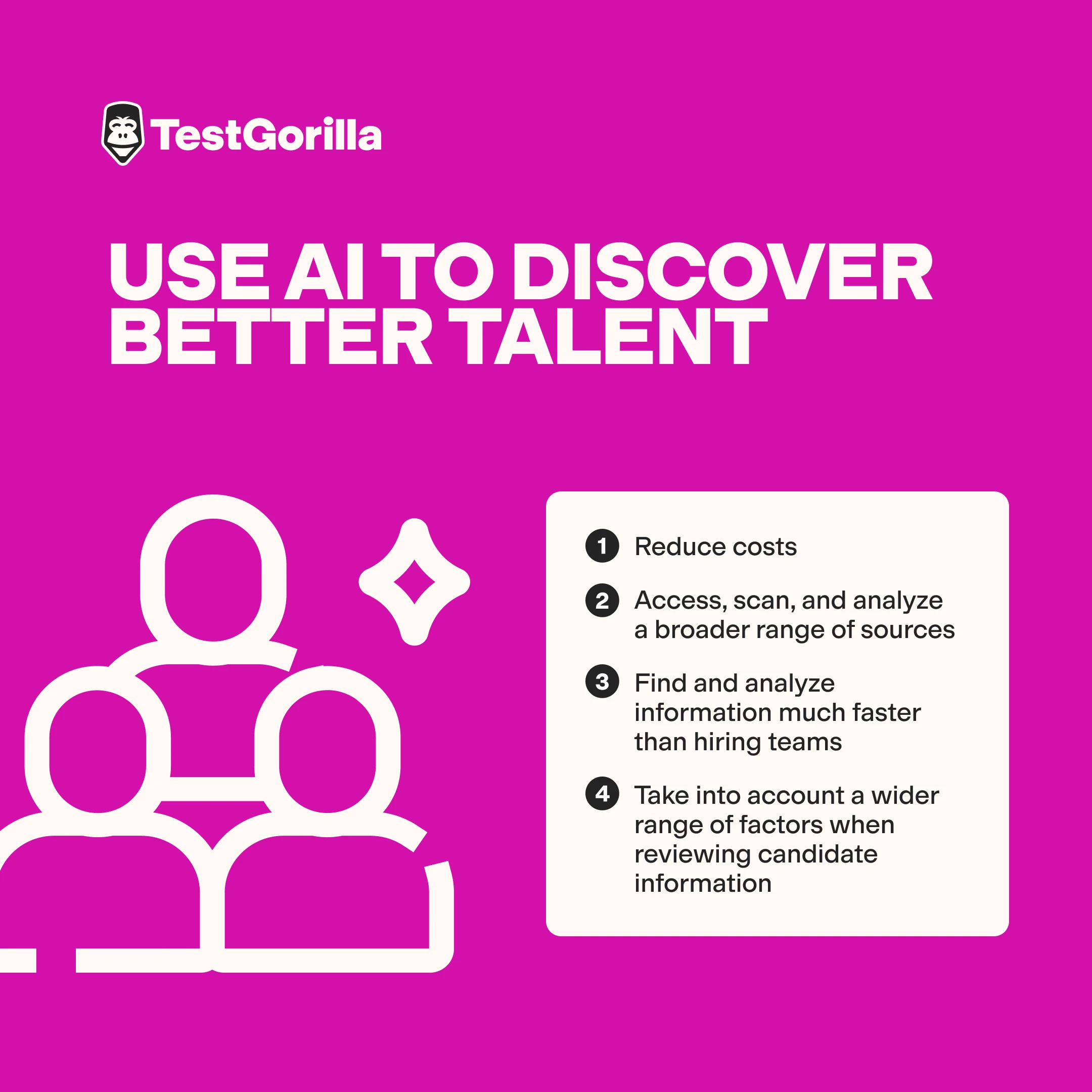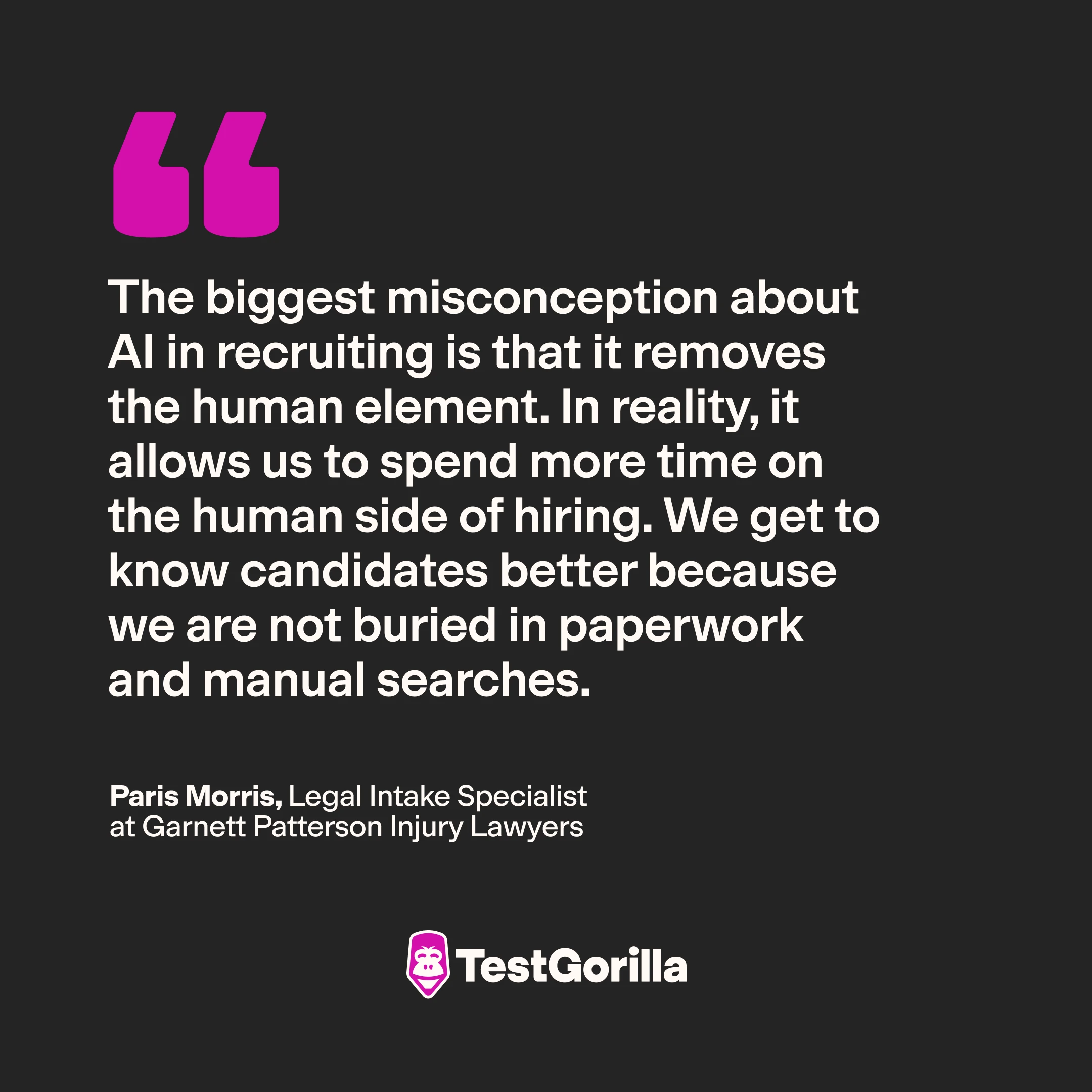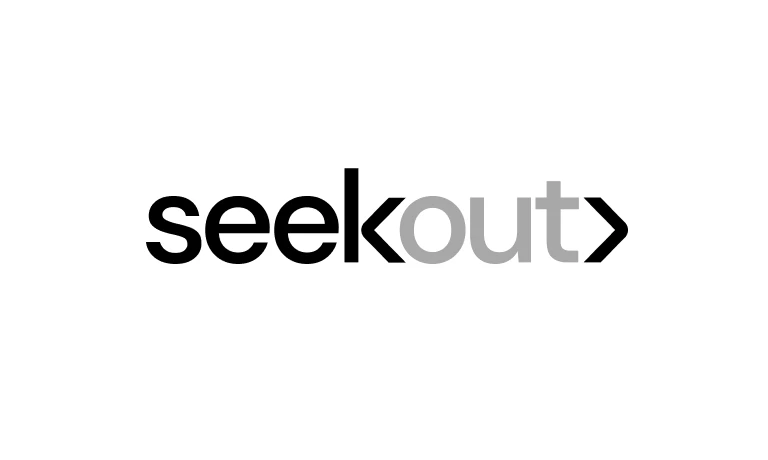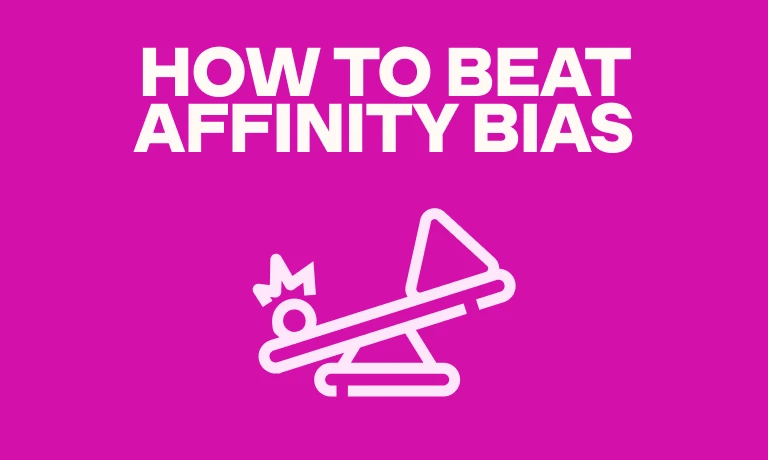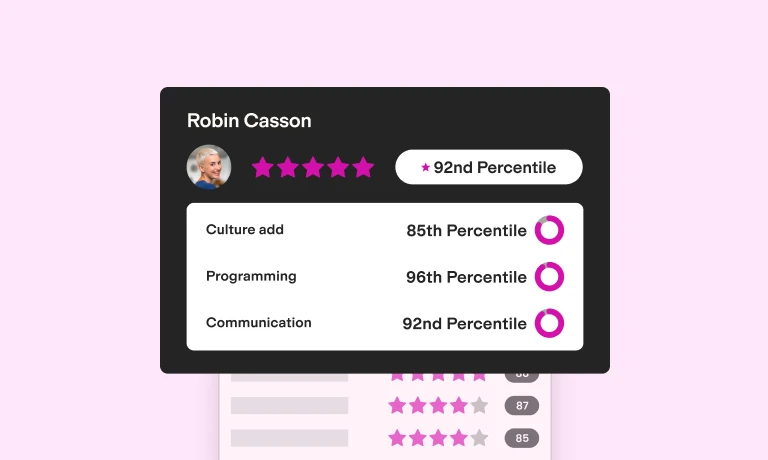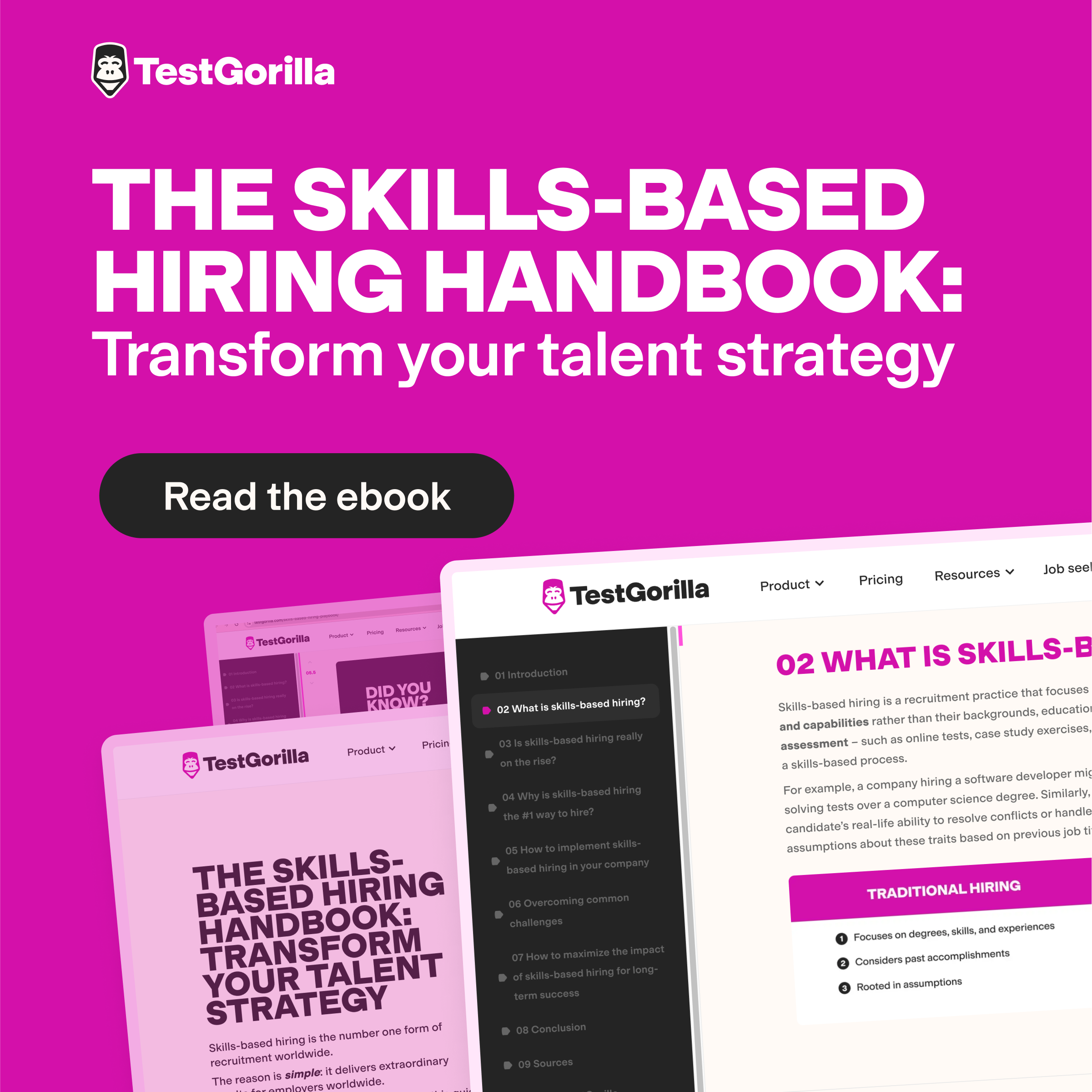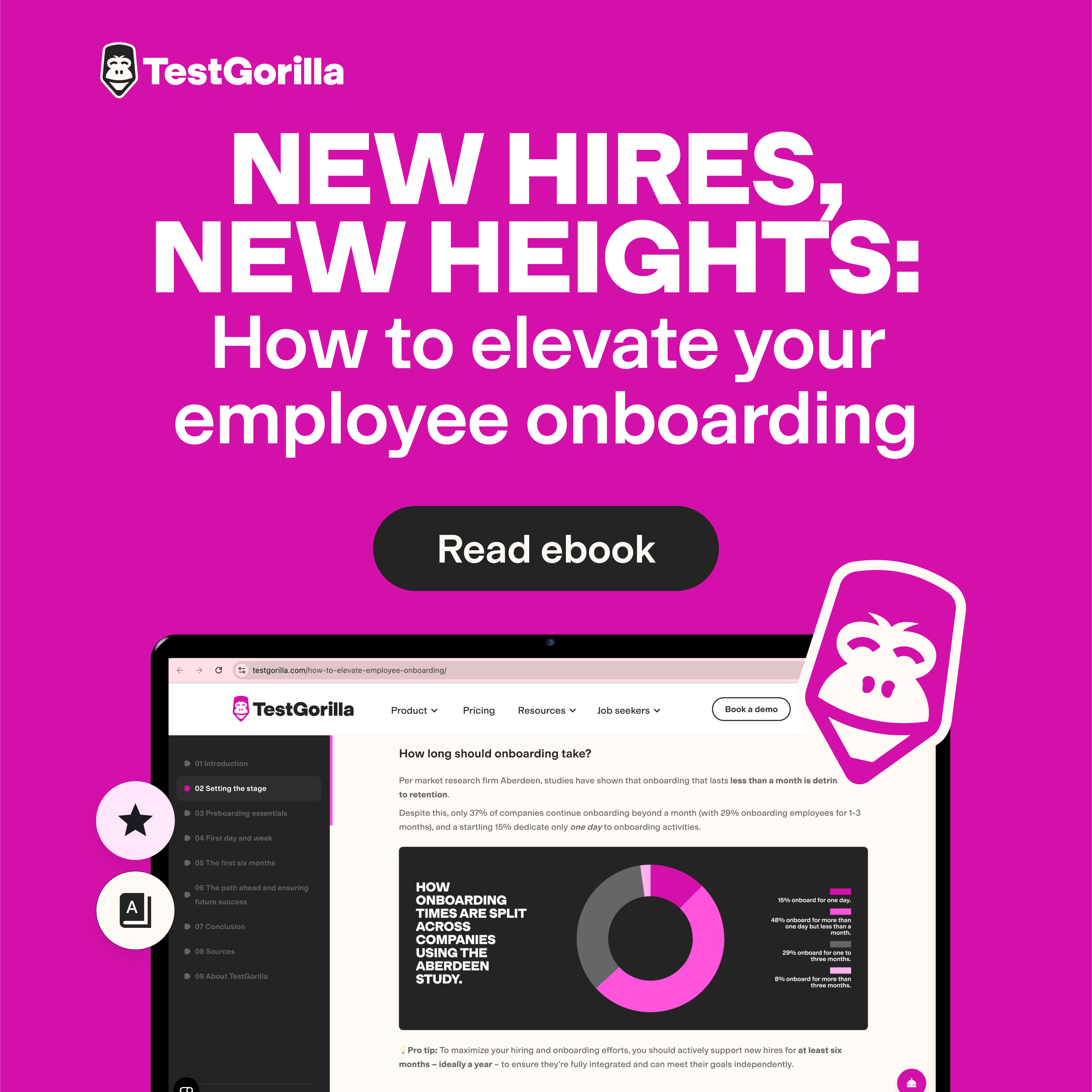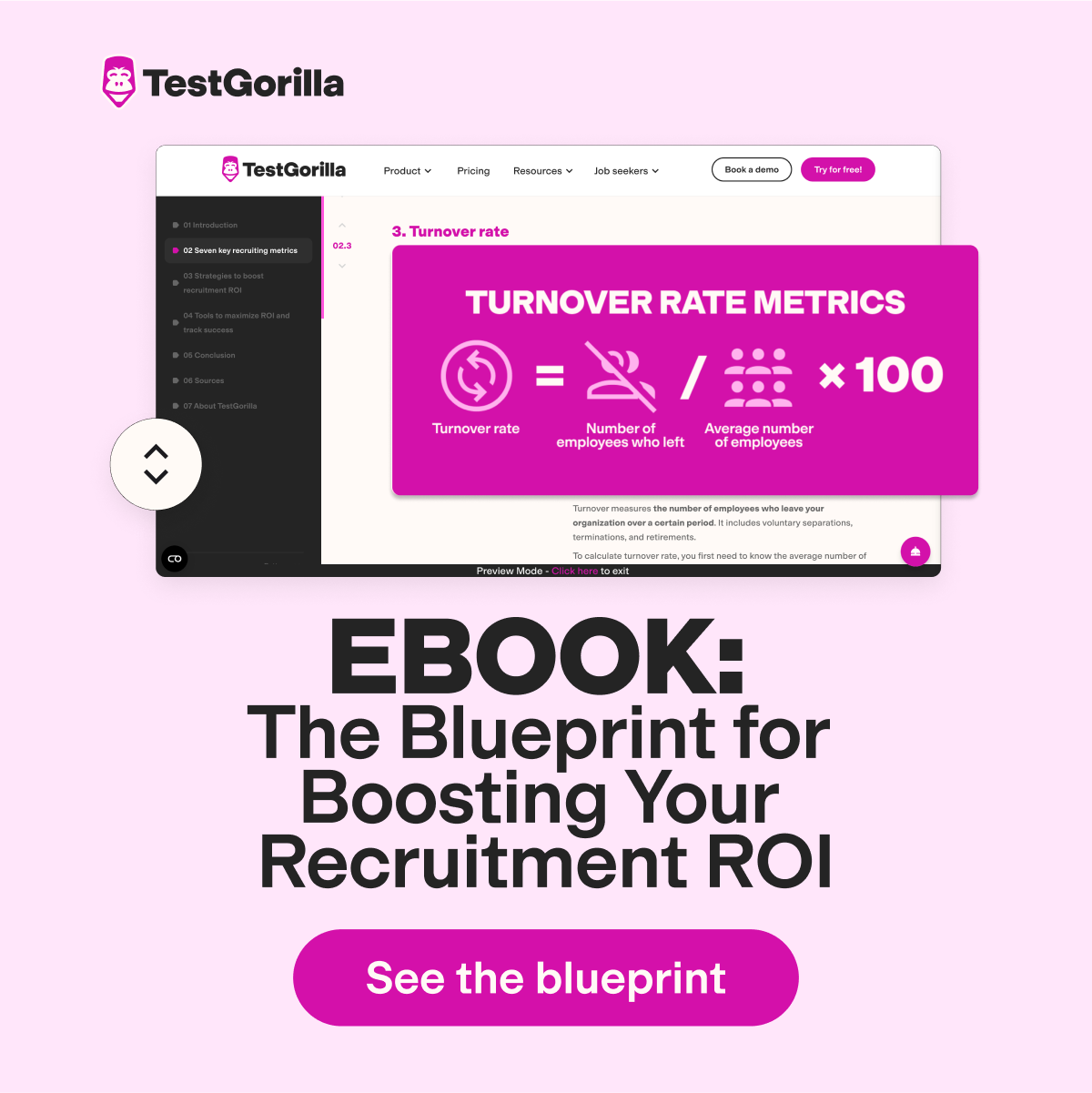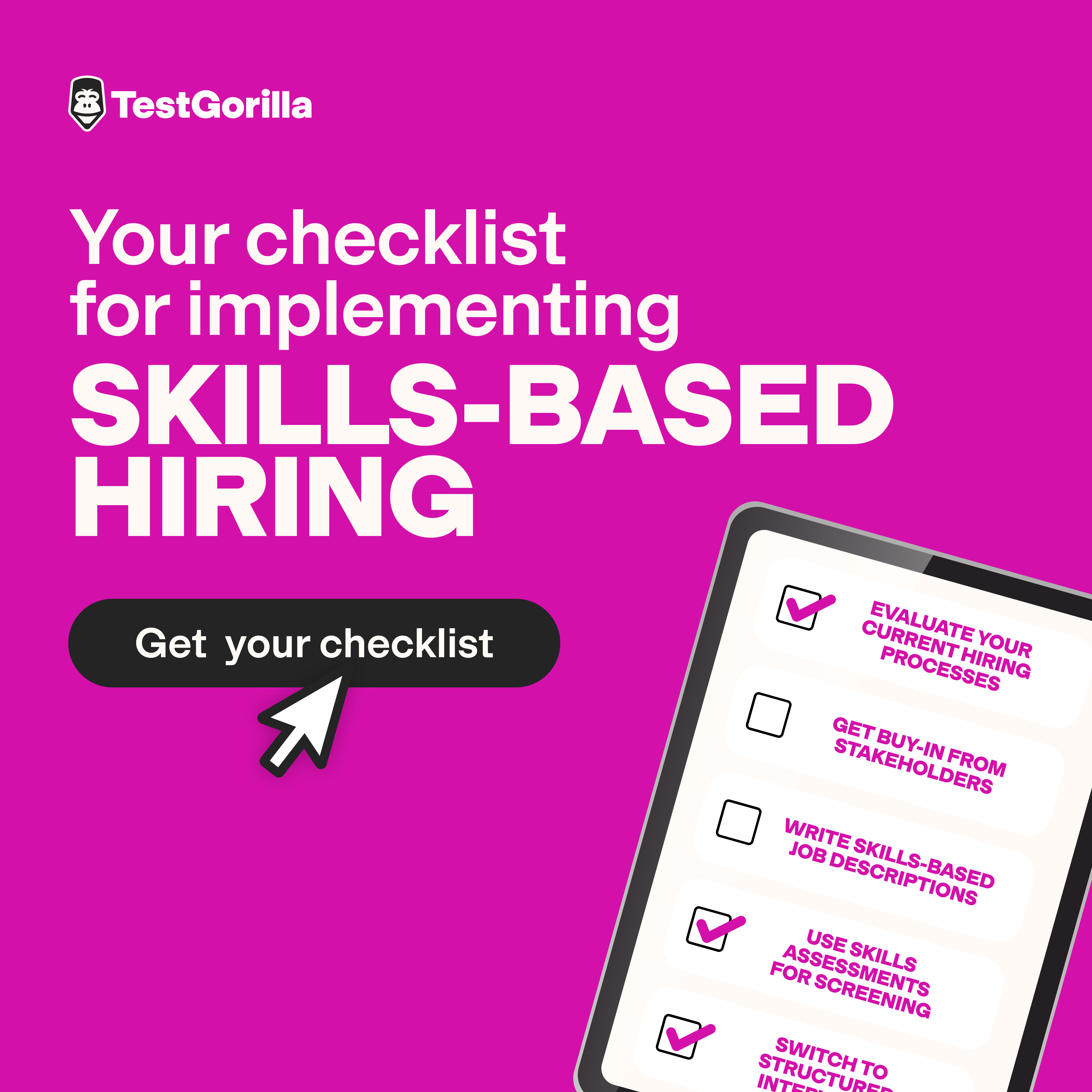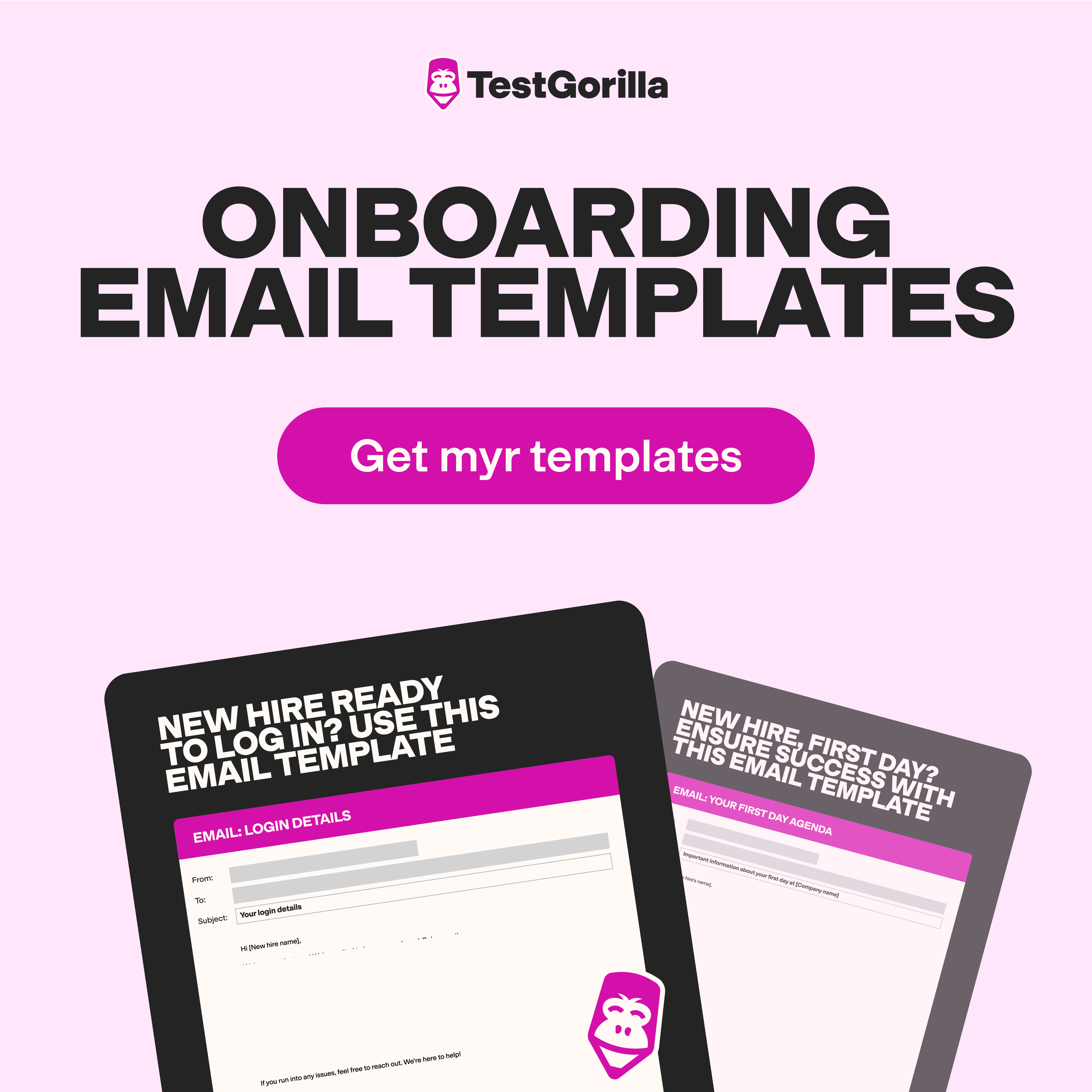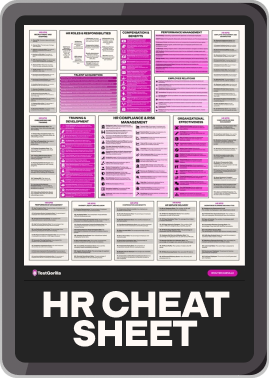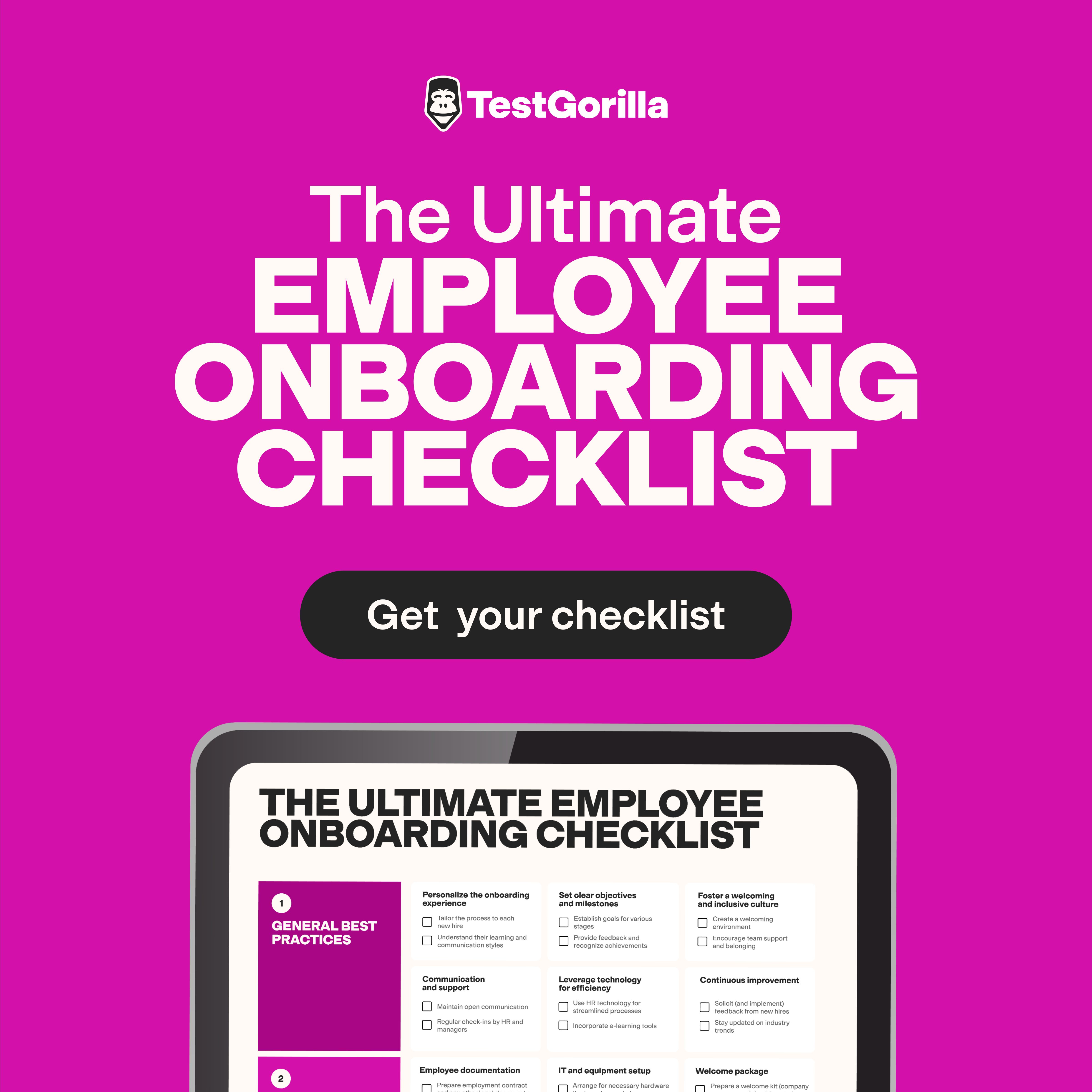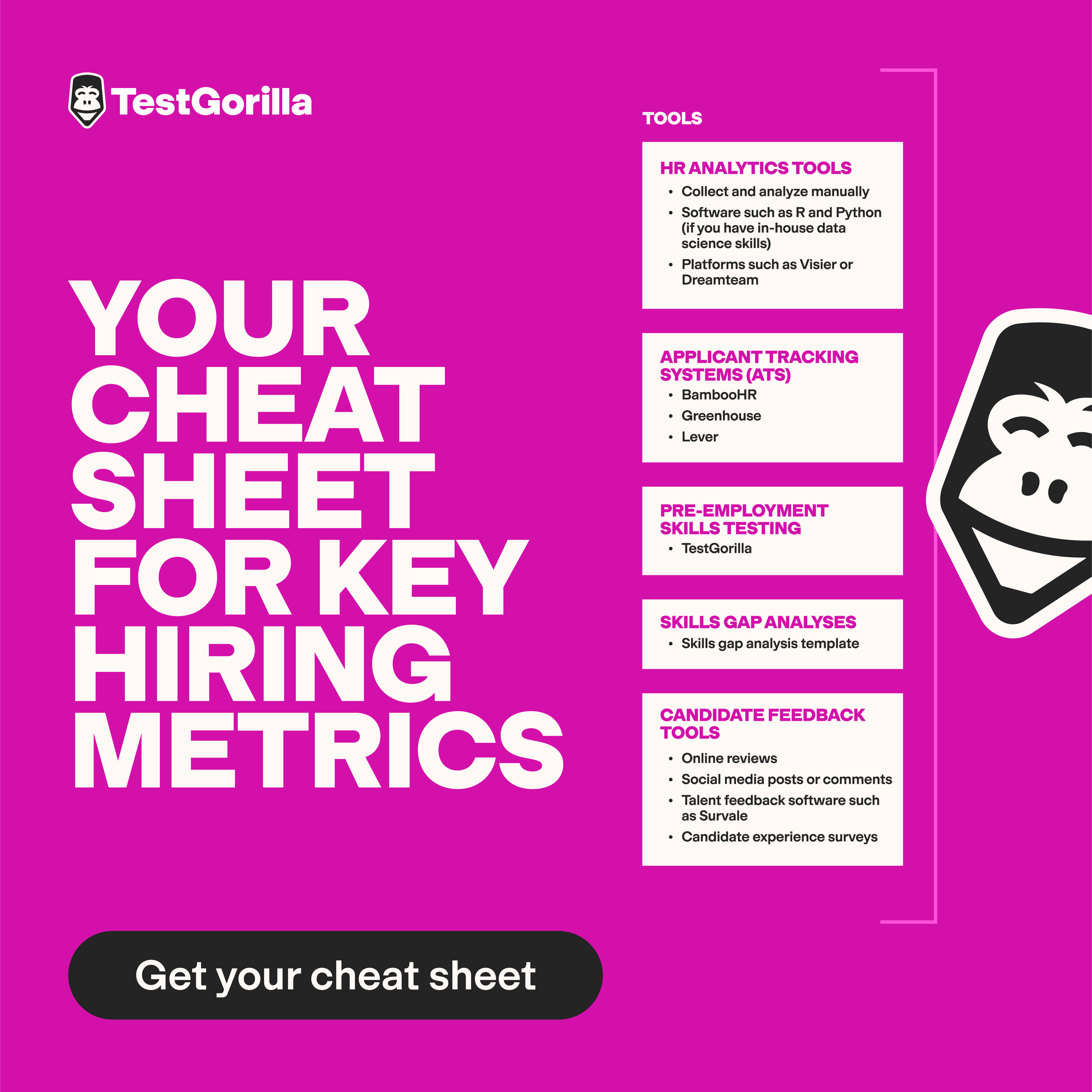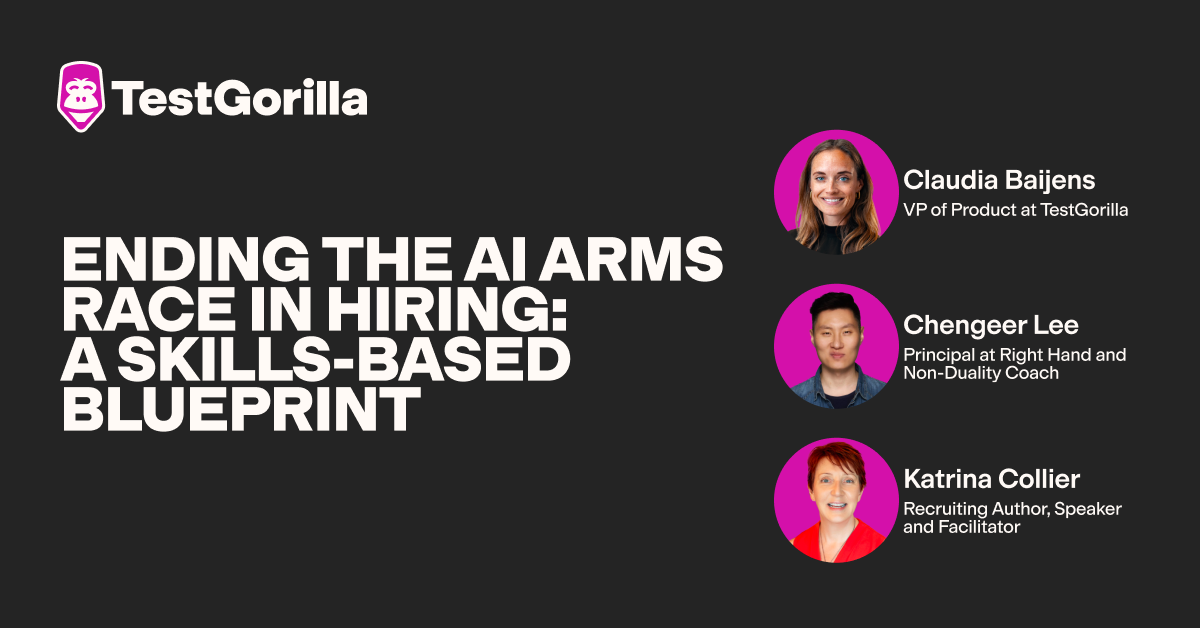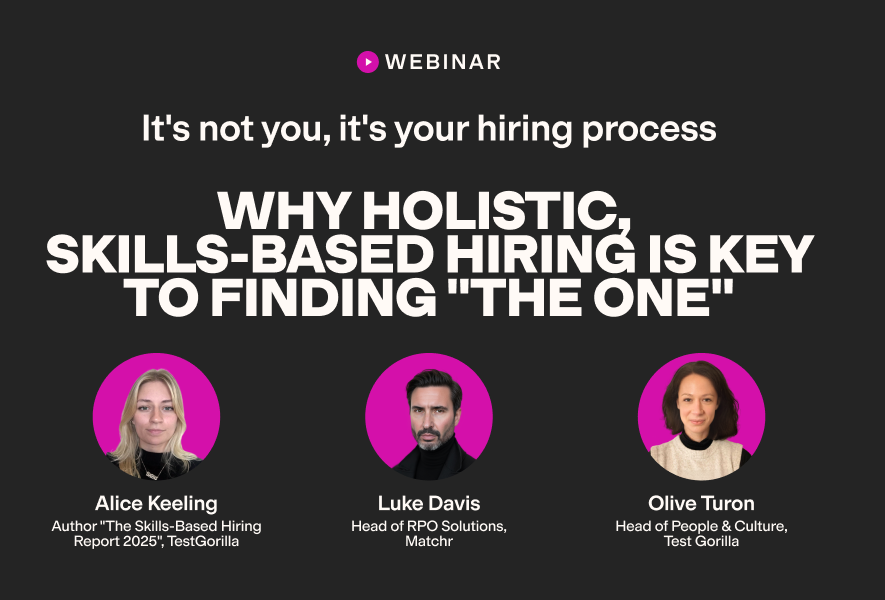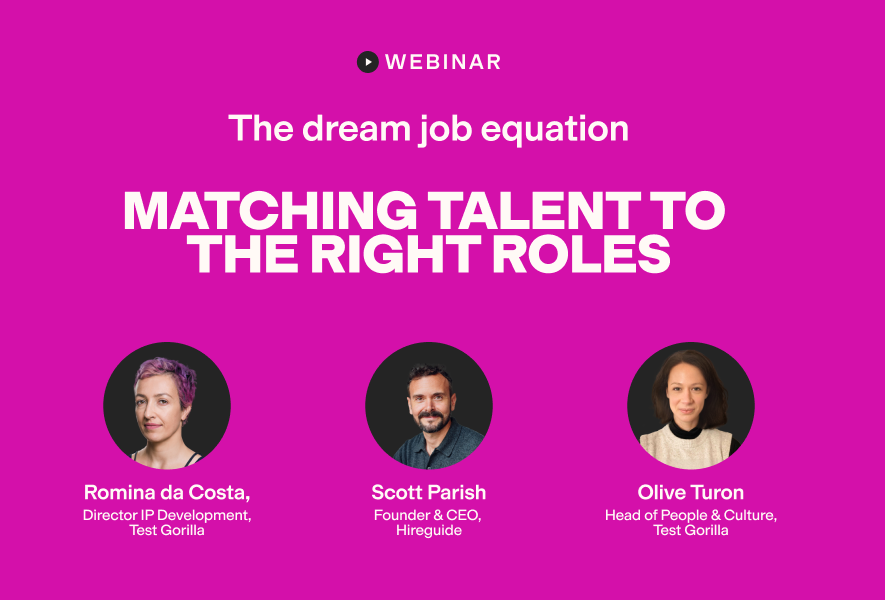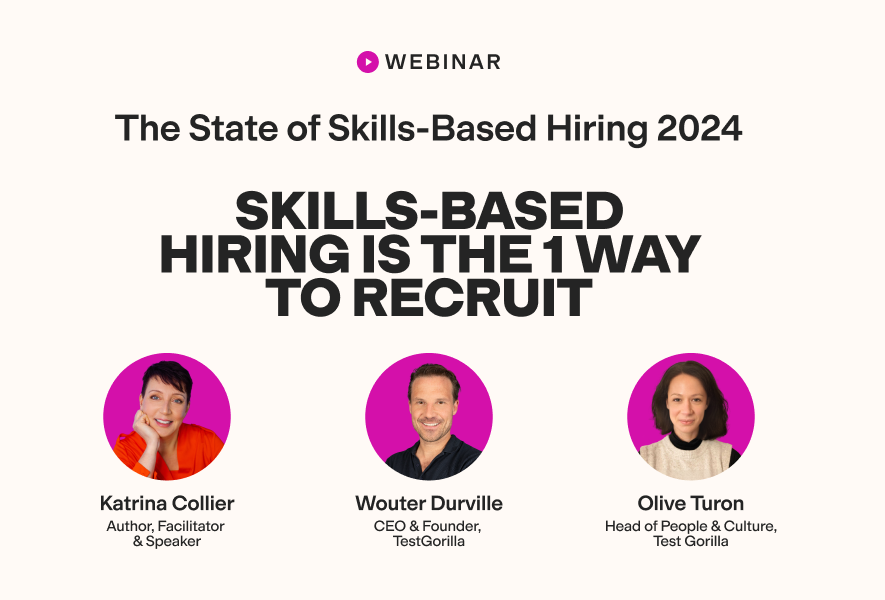When AI first entered the recruitment conversation, hirers’ reactions ranged from “this is just a fad” to “AI is coming for all of our jobs.”
A few years in, and our research reveals that 51% of employers are now using AI to source candidates, and it’s only growing in popularity.
Our take? More and more employers are seeing the real value of AI in talent sourcing – uncovering high-potential talent that recruiters might otherwise overlook and reducing hiring bias by impartially vetting candidates.
In this article, we look beyond the hype around AI sourcing. We explore what it actually means and how it can support better, fairer hiring when combined with human oversight and safeguards like skills assessments.
What is AI talent sourcing?
AI sourcing involves using AI tools to make it quicker and easier for hiring managers to find and connect with quality talent.
What does this look like in practice? HR teams are using AI sourcing tools to:
Screen large volumes of resumes and other data to identify candidates with the right skills and experience quickly
Analyze candidate data to find top talent that hirers may otherwise miss
Scan industry forums, professional organizations, social media profiles, and portfolio sites to spot passive candidates who may be interested in new opportunities
Match candidates’ skills with job openings, even if their previous job titles aren’t identical
More employers are adopting technology to streamline their talent sourcing, reduce costs, and find better talent – and it’s easy to understand why. For instance, it can:
Access, scan, and analyze a broader range of sources than recruiters, who have to do it manually
Find and analyze information much faster than hiring teams, including scanning hundreds or even thousands of resumes within seconds
Take into account a wider range of factors when reviewing candidate information, including skills, experience, similar projects, interests, and location
Most importantly, AI sourcing is one of the best tools for accessing hidden talent and reducing bias in the hiring process.
AI has the capacity to analyze vast amounts of data, much more than recruiters can by themselves. It can widen talent pools by revealing adjacent skills, non-obvious career patterns, and passive candidates. And, when paired with the right extra safeguards, AI is also good at removing subjective factors from the sourcing process, leading to fairer hiring.
What AI sourcing isn’t
It’s important to cut through the hype around AI sourcing to understand its full potential.
According to Korn Ferry’s Talent Trends 2025 report, 67% of talent specialists believe that 2025’s top trend is more AI usage. But AI sourcing isn’t just a fad. It’s a fundamental, long-term shift in how we connect people to roles. And employers who ignore it risk falling behind.
And while AI sourcing offers ways to improve the hiring process, it’s unlikely to put HR teams out of a job anytime soon.
Paris Morris, Legal Intake Specialist at Garnett Patterson Injury Lawyers, spoke to TestGorilla about her take on the peaceful coexistence of AI and hiring teams.
“The biggest misconception about AI in recruiting is that it removes the human element,” she says. “In reality, it allows us to spend more time on the human side of hiring. We get to know candidates better because we are not buried in paperwork and manual searches.”
When done right, AI sourcing isn’t just about automating hiring. It’s about ethical AI recruiting that helps more candidates get seen while keeping humans in control.
How AI helps you find non-obvious talent
One of AI’s superpowers in the recruitment context is finding hidden talent that hiring teams may otherwise overlook. Here’s how it does that.
Adjacent skills mapping
AI hiring tools are ideal for identifying adjacent skills that can uncover suitable candidates who, at first glance, may not look like a perfect fit.
By analyzing data like job descriptions and career paths, AI understands and can identify:
Transferable skills
Similar or identical capabilities that are called different things in different industries
Skills that candidates could easily develop based on their current competencies
This saves high-potential candidates from slipping through the cracks during the review process. For example, someone with cloud security and risk assessment skills could be an ideal hire for a cybersecurity analyst role, even if this specific role doesn’t appear on their resume.
Paris Morris gave TestGorilla a prime example of this.
“One example is a paralegal we found through an AI sourcing tool who had worked in compliance for a financial institution. The tool recognized transferable skills like document review and regulatory knowledge, which made them a perfect fit for our litigation support team. That candidate would have been overlooked in a traditional search.”
Pattern spotting beyond resumes
AI has moved on from simply matching keywords from job descriptions to candidates’ resumes. It can now collate and analyze data on their previous projects, portfolios, and career progression to find candidates who are ideally suited to a role.
This has a powerful effect on widening talent pools, as Chris Kirksey, Founder and CEO of Direction.com, explains.
“AI assists you in going deeper and identifying pertinent skills and experience that are not readily visible. For example, AI provided candidates with excellent freelancing backgrounds who lacked the sort of credentials that we were used to but are a perfect fit. In a typical search, these people would have been excluded, but with AI we can potentially increase our talent pool by more than 25 percent.”
Uncovering passive candidates
Top talent could be open to discussing the right role, even if they’re not actively applying – for instance, 37.3% of US workers are passively open to new opportunities.
AI sourcing gives you access to this vast pool of untapped talent. Its capacity to analyze large amounts of data, including updates to online profiles, engagement with recruiters or job-related content, and recent qualifications, makes it easier for hiring teams to identify and reach out to these passive candidates.
IT and HR entrepreneur, Syed M. Ahmed, describes this function of AI as “having an extra set of eyes to spot those hidden gems.”
“It's like having a supercharged detective that not only identifies relevant skills but also detects subtle signals indicating a candidate's potential interest,” he says. “In a competitive landscape where top tech talent may not actively seek new opportunities, AI becomes our strategic ally, helping us reach out to those who might be the perfect fit but aren't actively looking.”
The best insights on HR and recruitment, delivered to your inbox.
Biweekly updates. No spam. Unsubscribe any time.
How AI can help reduce hiring bias
Even with the best of intentions, the hiring process is open to unconscious bias.
For example, a hiring manager may unconsciously prefer applications from candidates who went to the same university as they did or prioritize male applicants for a leadership role based on their internal assumption that males make better leaders than females.
The bias issue poses a huge risk for employers. It opens the door to potential discrimination and the associated legal risks. It also leads to a more homogenous workforce, meaning employers miss out on the wide-ranging benefits of diversity.
Unlike humans, AI can put aside candidates’ personal characteristics and assess resumes and applications based solely on objective criteria like hard and soft skills, experience, and career progression. This significantly reduces the risk of bias affecting the hiring process.
We spoke to Dr. Carolyn Kittell, Owner of Smile Essentials Cosmetic Dentistry, for her take.
“AI can bring candidates who match the requirements of the job but will otherwise be overlooked during a manual search because it will be capable of pinpointing the abilities that directly correlate with job performance,” she says. “The outcome is that the process is less unfair.”
AI doesn’t eliminate bias completely
While it has its uses, AI isn’t a silver bullet to remove the risk of bias from your hiring processes entirely.
The last few years have shown us that AI has the potential to make hiring bias worse. For example, AI can replicate biases in the material used to train it or in the people who created it. This is a concern for many employers considering using AI sourcing. According to Korn Ferry’s Talent Trends 2025 report, 25% of talent specialists are worried about this kind of algorithmic bias.
And they should be, given the legal risks. For example, there’s currently a class action lawsuit against Workday, an HR and finance software company, alleging the organization’s AI recruiting software discriminated against candidates aged 40 and over.
The key to bias reduction in AI recruiting? Taking a considered approach to the use of AI.
AI sourcing + skills assessments
There are a few ways you can do this. For example, before signing up for a specific software, ask the vendor for information about its bias risk reduction strategies and bias monitoring features. It’s also why humans should remain central to your hiring processes. Train your hiring team to understand bias and recognize instances of it when using AI tools.
Another effective way to mitigate the risk of bias in your hiring process is to pair your AI sourcing tools with skills assessments.
Skills assessments provide an objective way to evaluate a candidate's fit for a role by measuring their capabilities, thereby removing personal characteristics from the equation. These assessments help you make data-driven hiring decisions based on merit rather than irrelevant factors, like someone’s gender, name, or where they studied.
In TestGorilla’s 2025 State of Skills-Based Hiring Report, Fiona Barron, Director of The Gender Equity Collective, sums up the potential impact of taking a skills-based approach to hiring.
“Skills-based hiring is a powerful driver of equity. It shifts the focus from traditional CVs – which often reflect privilege more than potential – to real, demonstrated capability. When designed intentionally, it helps remove bias from decision-making and gives overlooked candidates a genuine shot at being seen, valued, and hired.”
AI as a tool for better, fairer hiring
Over the last few years, the boldest predictions about AI have given way to a more practical and powerful reality. AI sourcing’s actual value lies in accessing broader talent pools, uncovering hidden talent, and helping to reduce bias in the hiring process.
However, this doesn’t mean AI is going to replace entire hiring teams or completely remove the risk of unconscious bias affecting recruitment decisions. The best results come when employers prioritize skills-first AI sourcing and take a considered, human-centric approach.
That’s where TestGorilla’s AI sourcing platform can help transform your recruitment, pairing AI technology with scientifically validated talent assessments. Our AI is transparent, human-guided, and fully monitorable, helping you build a fairer, more objective hiring process.
Interested in seeing exactly how it works? Get started today by booking a demo or signing up for a free account.
Related posts
You've scrolled this far
Why not try TestGorilla for free, and see what happens when you put skills first.


